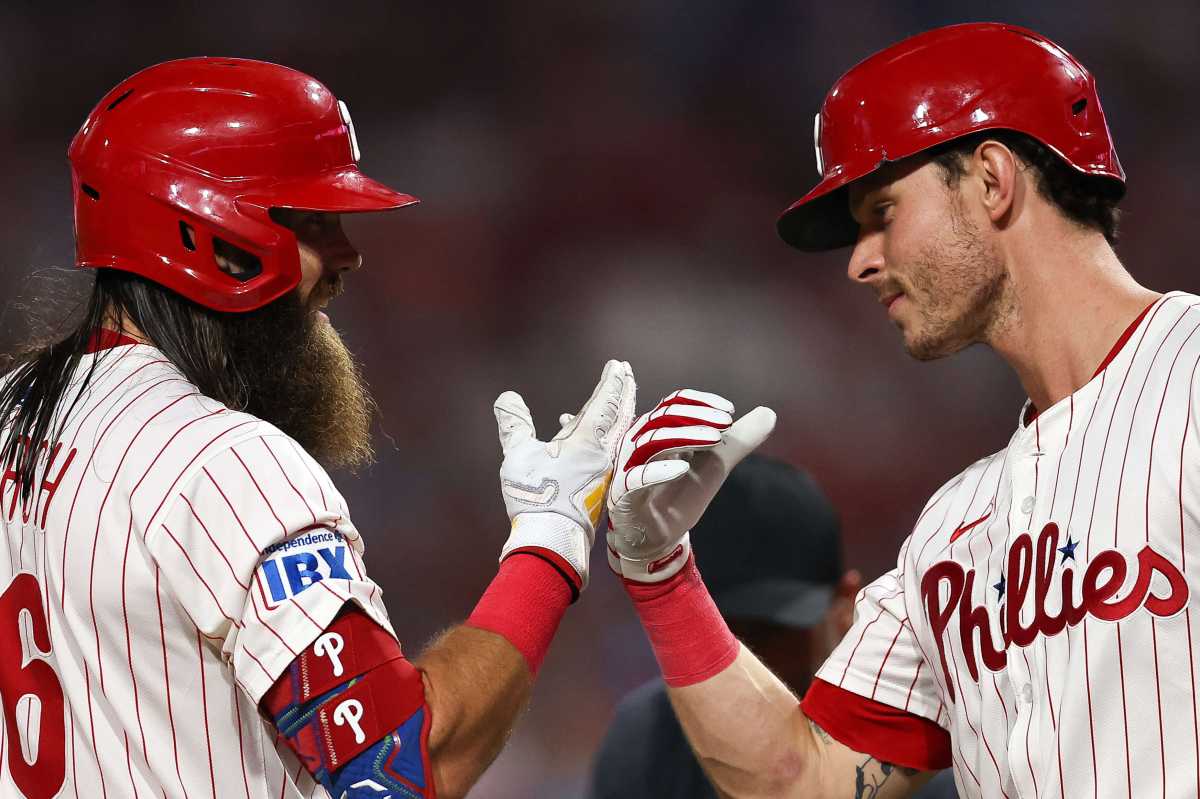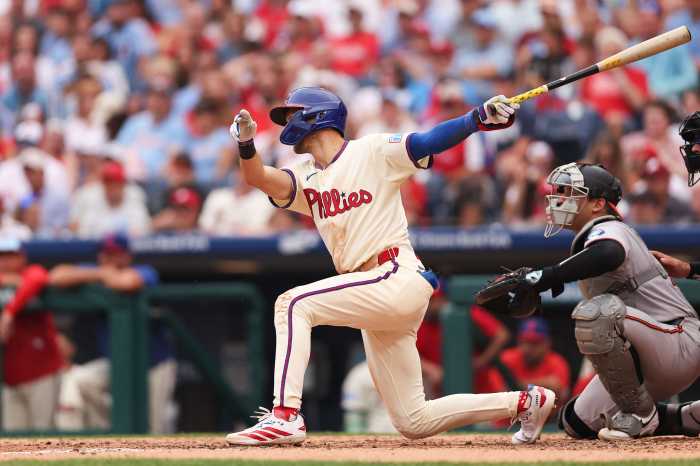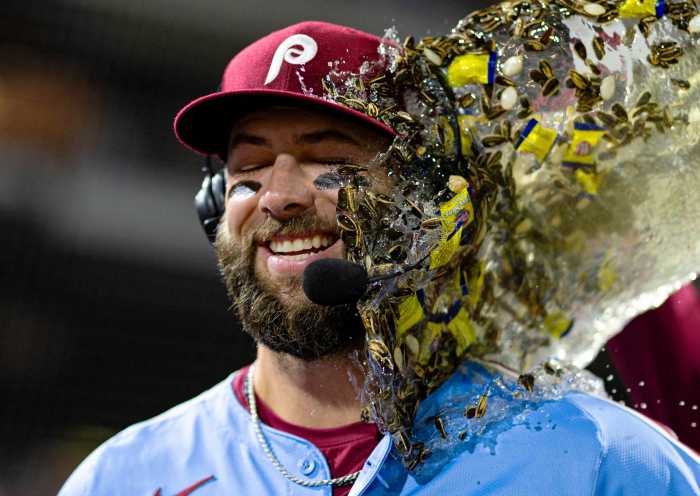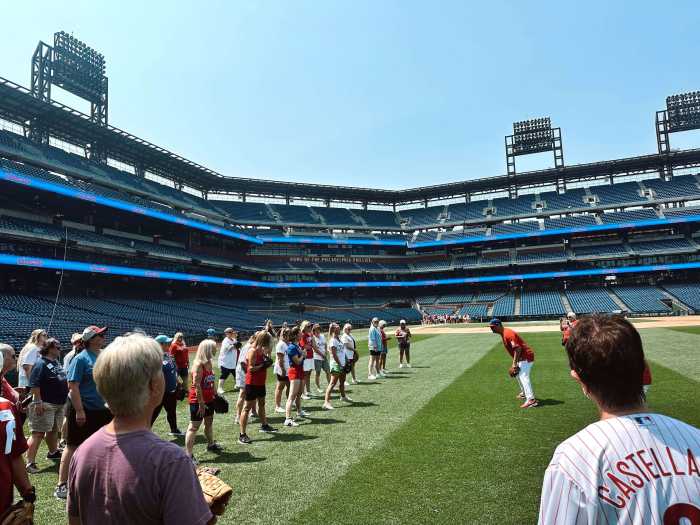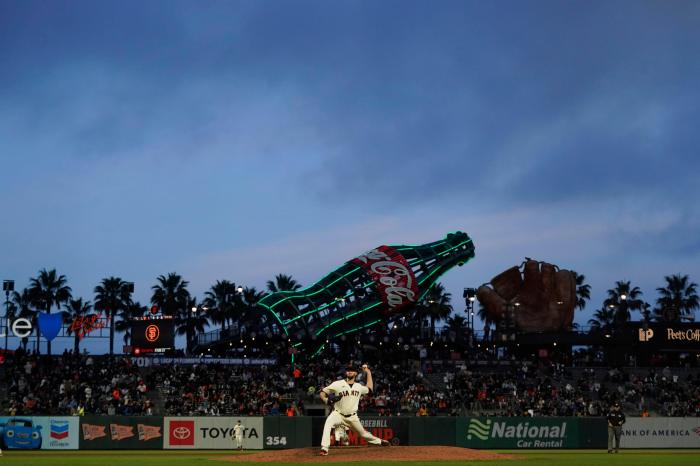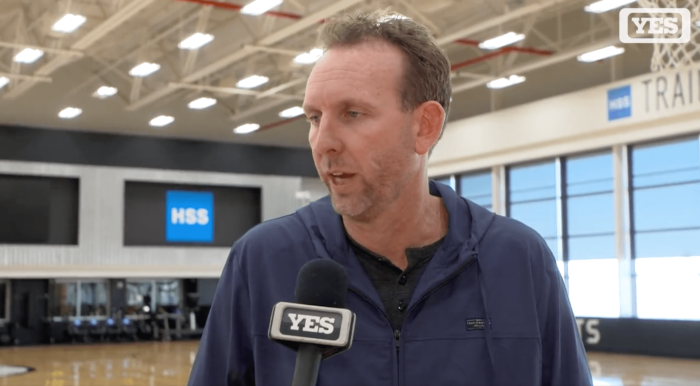The word “experiment” has become somewhat cliché in the modern professional sports world. You may have heard the word used in recent years whenever a certain player struggles. Things like “The Rojas experiment isn’t working” to “I’m already over the Jordan Romano experiment” have flooded the airways. What we have witnessed over the last six games for the Philadelphia Phillies, however, is a true and proper “experiment” having been done, and it is time to evaluate it.
Any good experiment begins with identifying a problem you want to fix or change. In this case, the problem the Phillies had to fix was the lack of production from left and center field. Max Kepler, whom the Phillies signed this offseason to provide stability in left field, has batted .204 in 98 games. Johan Rojas was recently demoted to AAA Lehigh Valley with a .569 OPS on the season, the lowest among the Phillies’ everyday players. Brandon Marsh has rebounded from his weak start to the year, recently closing July with a .271 average on the month, but he has yet to inspire confidence against left-handed pitching.
A week departed from the MLB Trade Deadline, the Phillies added outfielder Harrison Bader to the fray from the Minnesota Twins. Justin Crawford, the No. 44 prospect in all of baseball as ranked by MLB.com is also an option, though the Phillies have been dragging their feet on that particular promotion. As the calendar flipped to August, Phillies’ manager Rob Thomson settled on a plan, committing to it for the Phillies’ upcoming homestand against the Detroit Tigers and Baltimore Orioles. The plan? Create a double platoon in left and center field.
A fertile ground for matchup madness
As the Phillies faced off against the Tigers and Orioles, they faced three left-handed pitchers and three-right handed pitchers. Against the right-handers, left-handed batters Brandon Marsh and Max Kepler were given the starts in center and left field, respectively. Against left-handed pitching, it reversed to the right-handed Harrison Bader and Weston Wilson. Otto Kemp got a little bit of work in left field throughout the six games but spent a majority of his time in the infield.
Six days later, each player involved has seen a minimum of nine at bats. Nick Castellanos, who started each day in right field, had 22 at bats in that time period for reference. Marsh, Bader, Kepler and Wilson each hit a home run in that time while Bader and Wilson walked once each. Speaking of Wilson, he went 4-for-9 on the stretch for the highest batting average of the outfield group. Marsh was not far behind, going 4-for-10.
Working primarily at third base, Kemp went 4-for-13. The two players who struggled over the six-game experiment were Kepler and Bader. Kepler went 2-for-9 while Bader was 2-for-14.
As a unit, including Kemp who will see time in the outfield down the stretch, Phillies’ outfielders combined to bat .286 over the six games, an increase over the collective unit’s .240 average throughout the season.

Context is key
Any experiment performed is always limited by certain measures and limitations. In this case, the Phillies’ experiment was limited by time. Anyone who has been in the game long will tell you that 14 at bats is not a sufficient sample size to tell you anything. Re-read the previous section. One could assume that, given the increase in team batting average, that the double platoon was successful. Another assumption could be that Max Kepler and Harrison Bader are weighing the rest down.
Just as in most things, however, context is key. One on side, Harrison Bader just moved to Philadelphia on Friday. He is not only trying to play ball, but is trying to learn a new team, his place in the clubhouse, how to get around Philadelphia, the whole nine yards. He probably hasn’t even gotten a cheesesteak yet. So you can excuse a weak batting average out of the gate when you look at the overall sample size of him batting .253 with a .767 OPS on the year.
Max Kepler, meanwhile, has been in Philadelphia all year and is in the midst of the worst full season of his career. Kepler showed some emotion over his poor season following Tuesday’s game against the Orioles:
”To be honest, it does get to me,” Kepler said. “I’m an overthinker, even before I started playing this game.”
On the flip side, Weston Wilson is made to look like an everyday starter from his sample size of nine at bats. His .444 average on the stretch drops to .234 when you look at his statistics from the year as a whole. Wilson’s value to the Phillies also primarily comes from his utility value being able to play in the infield as well, putting his job in the realm of Otto Kemp. Given that Wilson will likely be the player to return to Lehigh Valley when Alec Bohm returns from the Injured List, he can be ignored for the rest of this analysis.

Experiment Results
While on the surface, the experiment seemed to be evaluating as to whether the double platoon could be feasible moving forward, but that simply is not true.
Recognizing Weston Wilson’s likelihood to return to Lehigh Valley and Otto Kemp’s utility role, that leaves Brandon Marsh, Max Kepler, and Harrison Bader as the only three involved in potential platoons. Unless the Phillies moved Kemp solely to the outfield after Bohm returns from the Injured List. Assuming that outcome to be unlikely, let’s look at the three candidates.
Bader’s track record this season for the Twins and the fact that the Phillies traded two prospects for him not even a week ago means that he will remain on the squad. He is also a right-handed bat versus Marsh and Kepler who are both left-handed bats.
When comparing Marsh and Kepler, both on the six-game results and the full season, Marsh takes the Tastykake. Knowing the results of the experiment and the overall context, that would mean that Brandon Marsh and Harrison Bader should be the starting left and center fielders for the Phillies moving forward.
Further testing required
That is, until a new variable changes the equation. As previously mentioned, Crawford is knocking at the door and is ready for his Major League debut.
“If we do bring him up, he needs to play a lot,” said Dave Dombrowski on potentially bringing up Justin Crawford last week. “I’m not sure that we’re in a position to do that at this point today, but he’s not somebody that we would hesitate to bring up if we decided that was the right thing to do.”
If the Phillies were to determine that Crawford is ready to come up, he would demand regular at bats. In order to do so, the Phillies would most likely platoon Marsh and Bader in left field while giving Crawford center field. Kepler would be the odd man out roster-wise, likely getting designated for assignment.
With an off day scheduled for Thursday, manager Rob Thomson has time to analyze the data from the experiment of his own volition. His results and resulting decisions will be made clear on Friday as the Phillies begin their road trip against the Texas Rangers.
Mandatory Credit: Bill Streicher-Imagn Images

